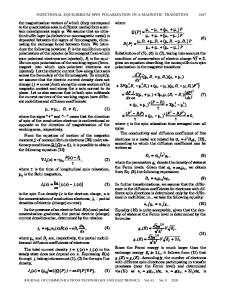Taking into Account the Surface Roughness in the Electron-Probe Energy-Dispersive Analysis of Powder Materials
- PDF / 1,266,652 Bytes
- 10 Pages / 612 x 792 pts (letter) Page_size
- 45 Downloads / 341 Views
into Account the Surface Roughness in the Electron-Probe Energy-Dispersive Analysis of Powder Materials D. E. Pukhova, * and A. A. Laptevab aValiev
Institute of Physics and Technology, Yaroslavl Branch, Russian Academy of Sciences, Yaroslavl, 150007 Russia bDemidov Yaroslavl State University, Yaroslavl, 150003 Russia *e-mail: [email protected] Received December 15, 2019; revised January 17, 2020; accepted January 20, 2020
Abstract—The features of the electron-probe energy-dispersive spectra of several powder materials are studied. Comparing the experimental results with published data, it is established that the effect of a difference in absorption is the main factor that affects the results of quantitative analysis. To describe the peculiarities of attenuation of the intensity of X-ray photons in powders, a theoretical absorption model is proposed and tested. In the described model, the surface of a sample is considered to be a combination of a large number of randomly oriented planes. The experimental data and simulation results are compared by analyzing the ratio of diagnostic-line intensities. The proposed model of attenuation of the characteristic radiation intensity in the powders agrees well with the experimental data. A mathematical method for taking into account the surface roughness can be used in computer algorithms for simulating the characteristic X-ray radiation and can be included in software for electron-probe analysis as an additional corrector in calculation of the elemental composition of the powder materials. Keywords: characteristic radiation, photon intensity, photon energy, radiation attenuation, absorption modeling, density of generation, orientation of material particles, quantitative analysis DOI: 10.1134/S1027451020050146
INTRODUCTION Electron-probe X-ray energy-dispersive spectrometry is a widely used and effective method for express analysis of the elemental composition of materials. Energy-dispersive microanalysis systems are compact, easy to integrate into electron-microscope devices, and have many positive characteristics. First is the rapidity of determining the elemental composition of the surface region of the material and the low cost of a single analysis. Secondly, it is the ability to analyze local spots of the sample surface with a spatial resolution of a few hundreds of nanometers to several micrometers, depending on the density of the material and the parameters of the probe, for scanning electron-beam systems and about tens of nanometers for transmission systems. Thirdly, X-ray photon detectors that are at present constantly improving allow one to detect impurity elements with a detection limit of about 0.05–0.1 wt % and a relative error of analysis within 10% for elements with a concentration of 1– 10 wt % [1–4]. Quantitative analysis methods for calculating the content of elements, which take into account matrix effects, make it possible to adequately determine the composition of a substance from its energy-dispersive spectrum. The conditions for correct calculation a
Data Loading...











